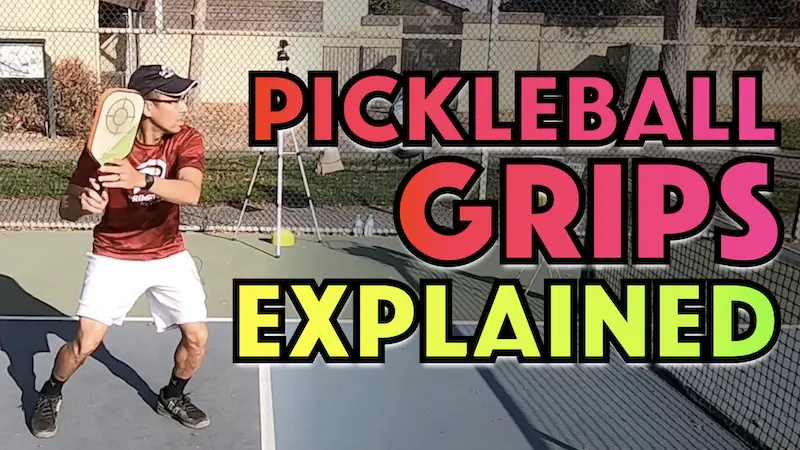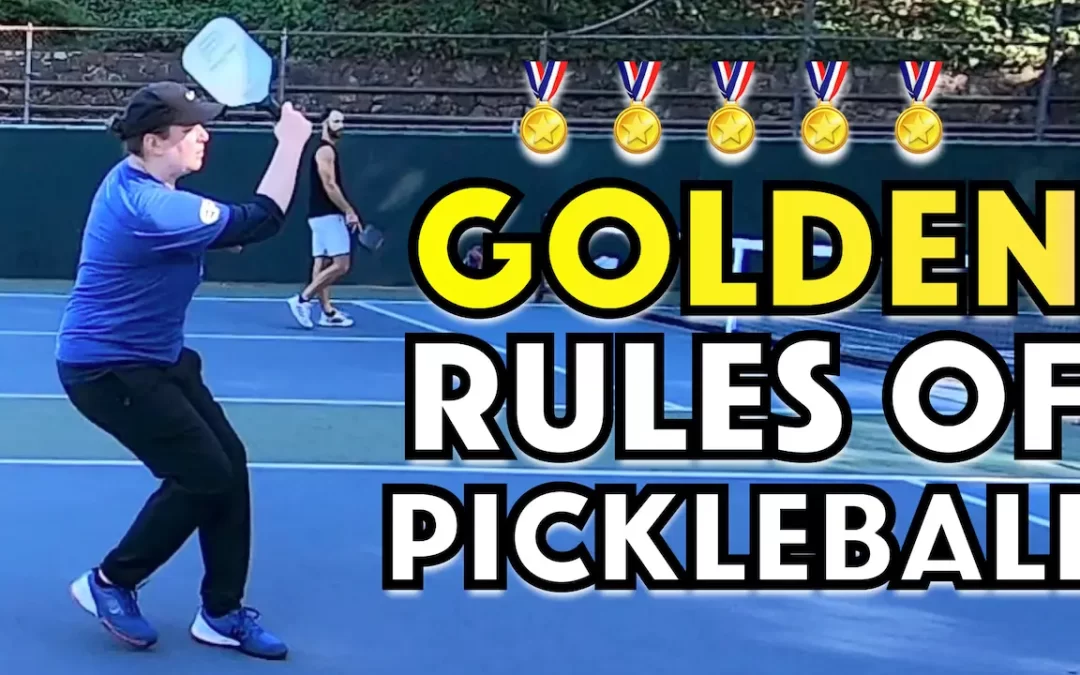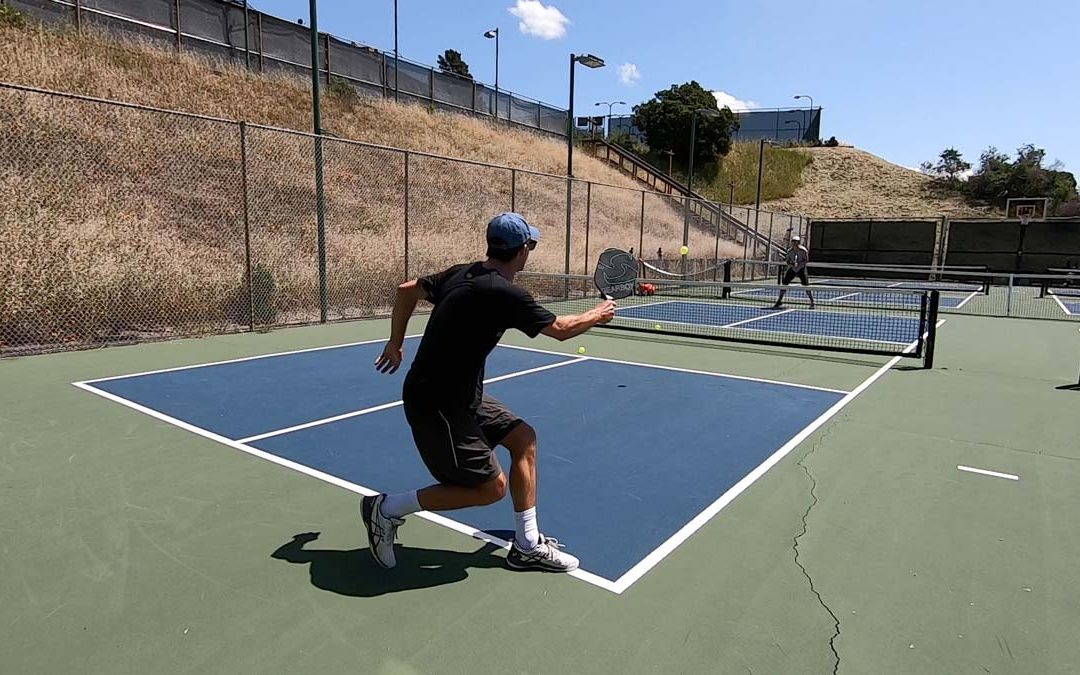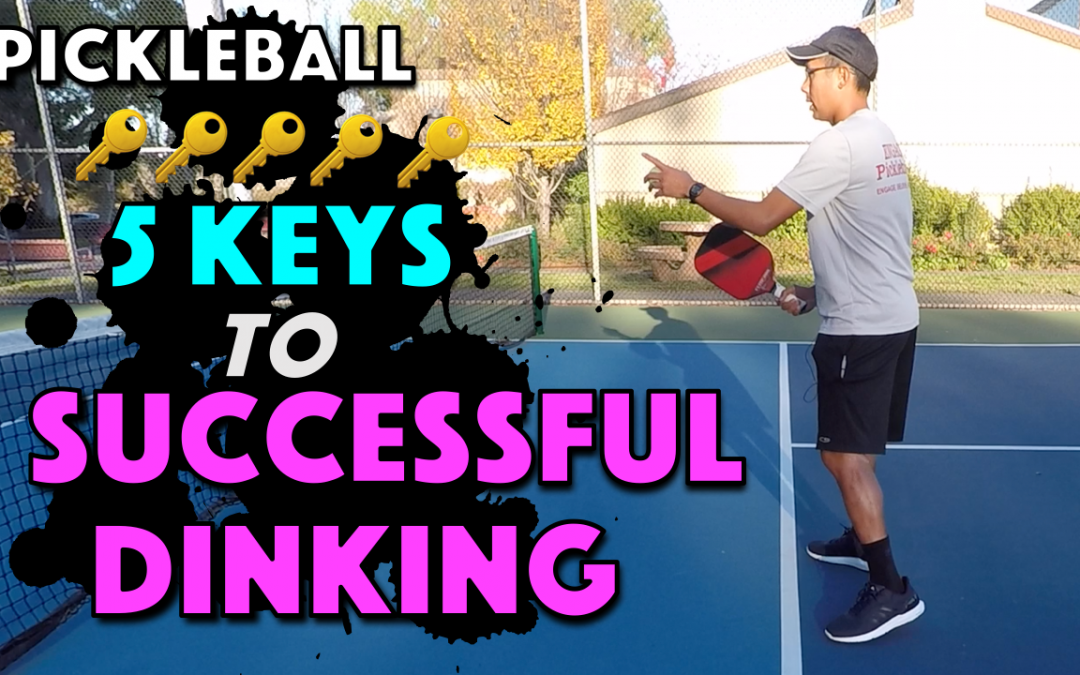The pickleball craze has hit the USA as you see more courts and tournaments and pickleball related events of all kinds popping up everywhere.
Looking to learn about the overhead smash, one of the most powerful shots you can deliver on the pickleball courts?
Whether you’re new to the game, or a seasoned pickleball player, your ultimate goal is to improve your game and have all the tools in order to play a winning game.
Maybe this image comes to mind…
…midway through the game, your opponent hits the ball, it goes up high, it’s hanging above your head. You position yourself, and then, you deliver a powerful overhead smash shot for a winner.
They saw it coming, yet still, they were powerless to defend against it.
Pickleball Smash Basics
The smash, also known as the pickleball overhead smash shot, is an aggressive offensive shot.
According to USA Pickleball, the smash is executed through a forceful hit, delivered as high as the player can reach, directed at a sharp downward angle, back into the opponent’s court.
Why is this shot so effective for many pickleball players?
Well, when well-executed, this shot becomes almost impossible to defend.
Why Footwork Is Important
Picture this:
You’re on the court, you see the ball go up, you get ready to deliver a smash, but your toes are pointed forward towards the net.
You’re facing the ball and fail to turn and get into proper position.
This makes executing the smash very difficult because you won’t be able to use your shoulder if you don’t turn your body sideways.
You’ll primarily use your wrist and due to the way your wrist will bend at this angle, you may end up hitting the ball straight down into the net.
You’ll have limited control and power doing it this way.
You may be wondering:
“How do I position myself for an effective smash shot?”
How To Position Your Feet For A Smash Shot
There are two words that are super important when it comes to delivering a powerful smash shot:
Turn and timing.
Start in a neutral position facing your opponent. When you see the ball go up into the air, above your head, pivot with one foot and step back with the other.
A key point about which foot does what:
If you are a right-hander, pivot your left foot and step back with your right foot. If you are a left-hander, pivot your right foot and step back with your left foot. Your body should be angled sideways towards the side fence.
Your non-paddle side shoulder should be pointed towards your opponent’s side of the court. Use your opposite hand (non-paddle hand) to track the ball. This helps you with balance and to better make contact with the ball when you hit it with your pickleball paddle.
When you swing to make contact with the ball, make sure to fully extend your arm. Use your shoulder, and not simply your elbow, to execute this shot. Swing it somewhat like a throwing motion.
Once your arm is fully extended and you have made contact with the ball, make sure to hit at downward at an angle.
Strong footwork is key to executing this shot at your maximum potential.
A Smash Versus A Swinging Volley
A smash is a shot that you make contact with over your head hence why it’s also referred to as an overhead.
While a swinging volley is also an offensive shot and the contact point can range anywhere from below net height to slightly above net height, it is not so high that you will hit it with an overhead motion.
The technique used will be very different which is what makes these two types of shots distinctly different even though you can hit both quite offensively depending on how well you get setup and how weak your opponents shot is.
On a swinging volley, the motion will be executed from back to front on the side of your body with a forehand (leading with the palm of your hand) or backhand (leading with your knuckles). With a contact point in front yet clearly to the side and not directly overhead like a smash.
How Much Power To Use With A Smash
Many players assume that you need to hit the ball as hard as you can in order for a smash to be effective.
It’s generally a good option to hit it hard but it’s not the only option.
Hard and deep is usually a good idea. If they’re able to get it back you will often have a chance at another overhead and can continually hit a few more hard and deep.
If they’re all well struck then there’s a good chance one will eventually not come back because defending well hit overhead smashes is very hard.
You can also take a little speed off your overhead and hit it shorter in the court at a sharp angle near one of the sidelines. It’s easiest to do this when you’re up in the court because you can get a sharper angle on it.
The opponents are likely expecting hard and deep targets on your overhead and by angling one off here and there, you have a good chance of them not being able to get to that shot.
So mixing in slightly softer and angled overheads is a good idea. Or, you could hit it hard and angled if you’re very well positioned and confident.
How Much Power Is Sufficient For Your Overheads
This will depend on your opponent and their skill level.
Essentially, though you should put good speed on it, it’s less about how hard you hit the ball and more about where you deliver it on your opponent’s court that counts the most.
Ideally, in the pickleball game, you want to win with a smash.
And, in order to deliver the most effective smash, you need to make sure that you not only don’t end up hitting the ball into the net or hitting it out but that you place it in a gap in the court either between your opponents or to one side and it be relatively close to a line.
If you hit it short and directly to an opponent that has reasonable skill, well, that will be less effective even if you hit it hard.
When Is It Not A Smash?
Many new players assume a smash shot is when you aggressively attack the ball in any way.
You “smashed” it!
Well, it’s definitely fun to think that and say that and get pumped up about your “smash”.
And you should definitely be pumped with your on court dominance
And you’re certainly free to think of it as “smashing” but, technically, the term “smash” is synonymous with “overhead”.
Lob & Smashes (Overheads) Go Hand In Hand
A lob is a high lofted shot by an opponent that will send the ball high overhead and deep (hopefully, if hit well). It is typically hit with an open paddle face and a low to high lifting motion.
So you may be wondering:
“What is the purpose of a lob shot?”
This shot serves one of two purposes: an offensive lob is intended to drive an opponent off the non-volley, or kitchen line, while a defensive lob aims to buy a player additional time while the lob is in flight to the other team in order to prepare for the next shot.
An Offensive Lob
An offensive lob should ideally be executed from contact point near the non-volley zone line. It’s best to use it when it comes as a surprise to your opponents. The fact that they’re not expecting it is part of what makes it so offensive.
They now have to scramble to deal with it and your team can remain in strong court position up at the net while they run back and are hitting it from deep in their court.
The reason you can make it a surprise is that you can do it when all four players have been engaged in a dink rally up until that point. The setup for your lob looks much like your setup for the dink so if you throw up a lob in the middle of a dink exchange and you get it high enough and deep enough, that’s a good play.
Use this play sparingly. If they’re not very surprised and they get the jump on it, they might come at you with a…guess what???… overhead smash. Then you might be in trouble.
A Defensive Lob
The defensive lob, on the other hand, is dealt to an opponent that has just attacked in order to buy a you (and your team) more time to recover and position yourself as well as possible to deal with the next shot that is coming. Which, will likely be an attacking shot again since they are on offense and you are on defense in this particular moment of the point.
The idea is to push the ball over the opponent’s head and get them hitting their next shot from as deep in their court as you can.
The higher and deeper you can get it the better. Ideally it will be so well hit that you can land it in the court behind them and they have to chase it down. Then, you (your team) can recapture the net.
Unfortunately, due to how small a pickleball court is, that is very hard to do. Your best bet is to get them contacting their next shot from as deep in their court as possible.
Your main objective is to stay alive in the point when you are on major defense like this.
You can probably now see how a lob leads to a smash and vice versa.
A smash shot is usually in response to a lob shot.
A player will want to do their utmost to counter a lob shot with a smash shot so they can remain on offense because once the ball gets over a player’s head and bounces behind them… they’ve just gone from being on major offense to major defense in one shot.
Final Thoughts
The game of pickleball is all about having a great time while running around, breaking a sweat and getting in some good and competetive fun with friends adn family.
But, apart from having a wonderful time knocking the ball around, improve your pickleball skills at your newfound passion can be a lot of fun too.
Adding a strong smash to your arsenal of pickleball shots may be the difference between you winning or losing a game.
Knowing when and how to deliver the smash shot is one of the keys to becoming a well rounded player and maximizing your fun on the courts.
Frequently Asked Questions
Is a pickleball smash difficult to learn?
Honestly, it is one of the more complex swinging motions in the game but just like anything, with helpful guidance and a little practice…it can be mastered.






